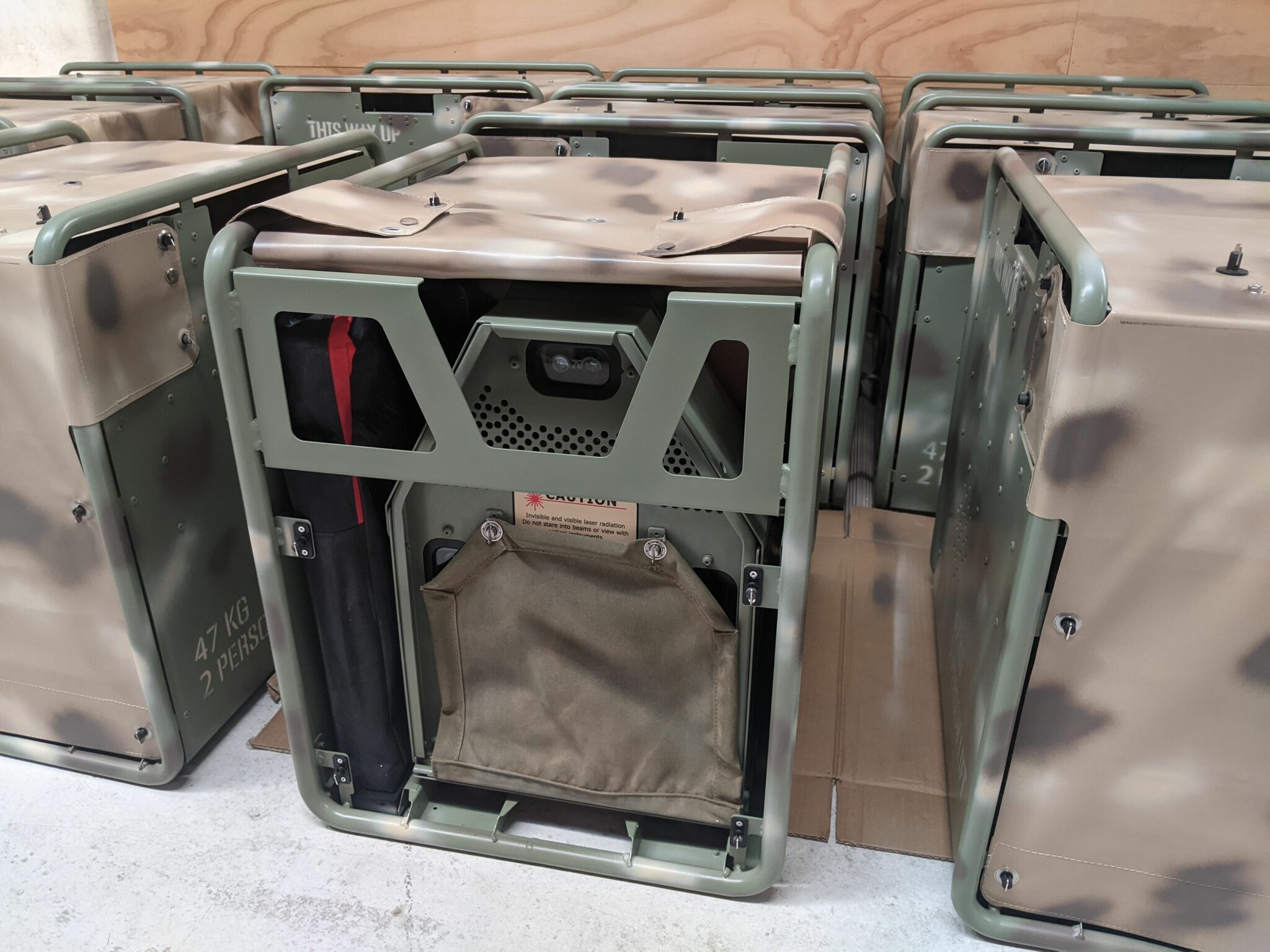Felixer grooming traps
Thylation have developed the Felixer, an automated Feral Cat Grooming Trap as a new tool of feral cat management. The unit uses an array of LiDAR beams to detect the shape and movement of a feral cat and sprays a lethal dose (8mg) of 1080 toxic gel onto the fur of the feral cat from up to four metres away. The feral cat instinctively grooms itself to remove the gel and in doing so ingests a lethal dose of the poison. The Felixer is capable of discharging 20 times (via 20 separate, measured dose cartridges) before the internal magazine needs to be reloaded with new cartridges.
The unit takes a photograph every time the detection beams are crossed, allowing managers to assess the efficacy of the trap in differentiating feral cats from non-target species and also allowing Felixers to be used as stand alone, solar powered camera traps. This new technology is being trialled Australia-wide, with more than 180 units deployed in different environments, with initial trials to demonstrate safety in each location with no cartridges in photo-only mode. Updates on performance and V3.2 AI-enabled Felixers are available on www.thylation.com.

- Very target specific
- Low maintenance once set up
- Potentially suitable for areas where baiting or firearms may not be appropriate
- Trials have demonstrated safety for humans, and a wide array of native species (See information on the Thylation website)
- Lease includes maintenance, software and hardware upgrades as applicable
- Photos are managed via a cloud based management system
- Relatively expensive initial outlay to prepay long-term Felixer lease
- Not currently applicable at a landscape scale
Felixers are available to lease via https://thylation.com/
- Animal ethics approval is not required to use the units in toxic mode when used for feral cat management purposes.
- Felixers must have cartridges inside a double locked hood, noting this may require alterations to the Felixer to meet this requirement. Options could include an additional padlock or bar system or changing the top lock.
- Ten cartridges per Felixer is the maximum amount permitted.
- Cartridges must contain 8mg 1080 per cartridge and be purchased from Thylation.
- Felixers are to be placed out of sight of the public and secured in place (examples include concrete base, locked gates, road closures, chained to secure posts). Conditions may vary depending on public access and likelihood of tampering with Felixers and will be detailed in the risk assessment.
- Felixers are required to be run for a period of four weeks in photo-only mode and results submitted to the risk assessor before risk assessment is completed and voucher to purchase the 1080 toxin is received.
- 1080 signage is to be installed according to the Code of Practice for the Safe Use and Management of Registered Pesticides containing 1080, PAPP and strychnine. Specific Felixer signage is to be used within proximity of each device (a template will be provided to proponents).
- Training in the use and possession of 1080 is to be completed by all people who will be undertaking deployment, use and ongoing maintenance of the machines (i.e. anyone who opens a unit or holds a key to access toxic cartridges in storage), training is available online via DPIRD.
- A certificate of training in the use of Felixer devices, available on the Thylation website. Confirmation of training completion is required on submitting the 1080 risk assessment, and before Thylation will authorise sale of cartridges.
- A 1080 baiting application must be submitted to the Department of Biodiversity, Conservation and Attractions (DBCA) via the Jot Form online application link, which is available on request by contacting [email protected]..
- A 1080 risk assessment will be completed by DBCA following submission of a 1080 baiting application, together with the results from the photo-only mode.
- DBCA will contact applicants for further information if needed and provide approval once the risk DBCA assessment is completed.
These automated units provide a promising method for targeted feral cat control at specific localities. Situations where they are particularly appropriate include: high-value threatened species populations in limited areas (such as ground parrot populations), locations that have a predator “sink” (such as on the outside of predator exclosures) or “source” (such as minesite rubbish tips), in locations where cats travel through limited areas (such as peninsulas or islands), or where large number of non-target species prevent use of other techniques. The units have low maintenance requirements, which is particularly helpful in remote regions.
Find out more information here https://thylation.com/contact-us/ and for use and permitting information in Western Australia contact the Ecosystem Health Branch at DBCA [email protected]
Further Reading
Read more about Felixers in our Bibliography
Image credits on this page
John Read



